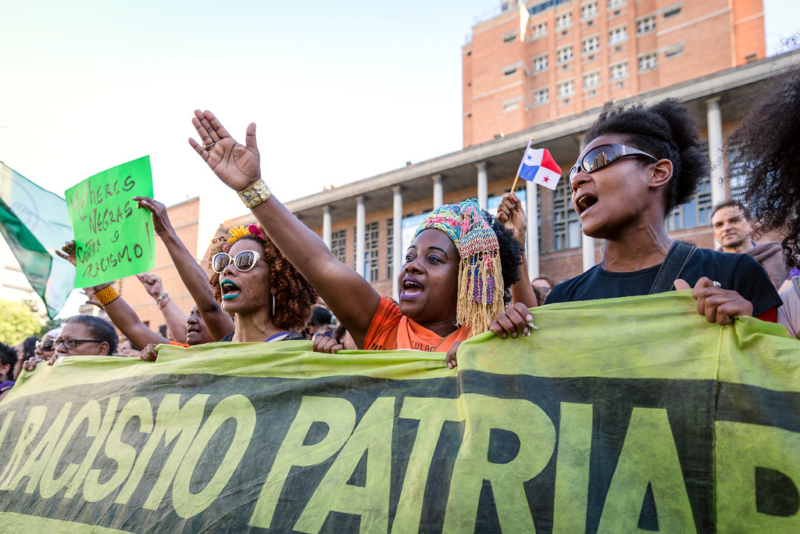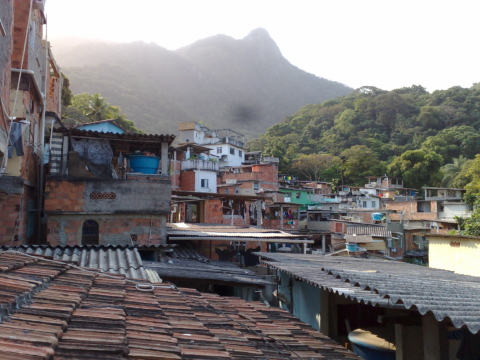Measuring Discrimination: Race and Data in Brazil
Though racial equality is improving in Brazil, there is significant room for progress.
Despite a veneer of racial tolerance in Latin America, customary law and practice has perpetuated racial inequality across the region, according to Tanya Hernández, professor of law at Fordham University. Hernández spoke at the Dialogue on November 2 to launch her latest book, Racial Subordination in Latin America: The Role of the State, Customary Law, and the New Civil Rights Response. Accompanied by Judith Morrison, senior advisor for Gender and Diversity at the Inter-American Development Bank, Hernández argued that both law and practice have discriminated against the region’s 150 million Afro-descendants.
Historically, Latin America has regarded itself as racially tolerant, especially compared to countries with state-mandated policies such as the Jim Crow laws in the United States or apartheid in South Africa. Such thinking has veiled the deeply engrained racism that continues to plague the region. Hernández noted that it also overlooks issues of race and customary law, or the series of unwritten norms that have become binding. Her book attempts to “challenge Latin America’s traditional narrative of a lack of state involvement in discrimination.”
Hernández cited different tools utilized by various Latin American countries to discriminate against their Afro-descendant peoples. At the end of the nineteenth century, Argentina heavily promoted European immigration through tax and land incentives in order to “whiten” Argentina’s racial identity. In several countries, police enforced policies that maintained public spaces as “white” spaces, representing a customary law practice that deepened racial inequality throughout the region. A final technique literally “erased” the African-descendant population. Governments have used the national census to diminish the number of people of African descent in an attempt to “whiten” the population through statistical data. Hernández noted that “erasing” populations “is not just ancient history, but a part of text books still used today.” She highlighted the example of the Dominican Republic where the country’s African history has been removed from school curricula.
This legacy is only part of the challenge in reversing Latin America’s widespread racial inequality. The complexities of self-identification make comprehensive legal frameworks very difficult to create. Who exactly is of African descent? Far from static, this social construct has created obstacles to developing appropriate policy. Nevertheless, affirmative action debates and policies to boost Afro-descendent representation in higher education and the public sector are moving quickly in Brazil. “This is a huge step forward and a sign of a great deal of acceptance,” Morrison asserted. Colombia is also demonstrating progress on civil rights by moving away from addressing such issues through a criminal law lens and criminalizing racial discrimination, instead recognizing racism as a systematic practice embedded in institutions, not an exceptional practice.
Concern over potential civil rights abuses regarding the upcoming World Cup and Olympics in Brazil demonstrates that there is still much to be accomplished. A current joint action plan between the US State Department and Brazil works to end discrimination through improving education, shaping public opinion, and learning from US experiences with civil rights and affirmative action. While there remains a gap between law and practice, Latin America appears on a rapid course to improving racial justice.
Though racial equality is improving in Brazil, there is significant room for progress.
Este livro traz uma reflexão sobre as desigualdades raciais contidas nos indicadores de escolarização da população brasileira. Na verdade, dentro do atual estado-da-arte do debate sobre o tema dos indicadores educacionais de nosso país já existe uma plena compreensão sobre as pronunciadas assimetrias presentes em termos do acesso e permanência…
Fiscal policy played an important role in reducing poverty and inequality in Brazil (Higgins and Pereira, 2014) over the last fifteen years, but how much redistribution and poverty reduction is being accomplished across ethnic groups?
 Sahand Minae for UN Women / Flickr / CC BY-NC-SA 2.0
Sahand Minae for UN Women / Flickr / CC BY-NC-SA 2.0
